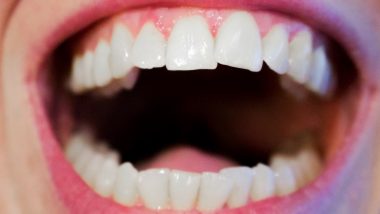An 83-year-old woman from Pune had a harrowing time, after her jaws got stuck after yawning. Vrinda Paranjape’s jaws got dislocated after she tried to yawn, leaving her mouth agape. Discomfort aside, the senior citizen found it impossible to eat or drink anything because she couldn’t move her jaws for over a month. This naturally left her dehydrated, starved and malnourished. She had also undergone considerable muscle loss since then.
Finally, she underwent a surgery under Dr Prasad Dadhe, oral and maxillofacial surgeon at Sahyadri Hospital, Pune and could finally close her mouth after a month-long ordeal. Dr Dadhe pointed out that putting her jaw joint back into its place was a challenge, but he ultimately succeeded in doing that, relieving the elderly woman from her problem.
What is jaw dislocation?
Dislocation of the jaw happens when the mandibular condyle of the jaw dislocates and gets stuck above the articular eminence, a bony part of the skull. The condition can sometimes be painful and cause a lot of inconvenience to the patient.
Why does it happen?
Age plays a big role in mandibular dislocation. Among the elderly, the ridges of the jaw start breaking down. Dislocation can also happen due to neuromuscular imbalance or structural problems and arthritic changes of the condyle.
Activities that involves wide opening of the mouth like yawning, taking a big bite, vomiting, seizures, forceful wide opening of the mouth etc. can cause the jaw to get locked and the mouth to remain open. Sometimes, even dental treatments like third molar extractions, root canals or laryngoscopy can trigger dislocation.
Is it a common problem?
Dr Dadhe who carried out the complicated surgery on the woman told Latestly that it is not a very common problem. “It is seen mostly in the elderly patients and among people who already have weak joints. The problem is called laxity of the capsule or capsular laxity” he revealed.
How is it treated?
Surgery is one way to deal with it. But other non-invasive techniques such as Hippocratic method, Awang’s gag reflect method, wrist-pivot technique, recumbent approach and even use of Botox to loosen the muscles is used to treat the problem.
“Usually, if the problem is reported to the doctor within 2-3 hours, we can treat it in the OPD itself. It rarely requires surgery if treatment is sought immediately. In the case of the old woman, it took the family around a month to seek proper treatment to the problem. That’s why we had to opt for a surgery,” he said.
(The above story first appeared on LatestLY on Mar 13, 2018 06:23 PM IST. For more news and updates on politics, world, sports, entertainment and lifestyle, log on to our website latestly.com).













 Quickly
Quickly





















